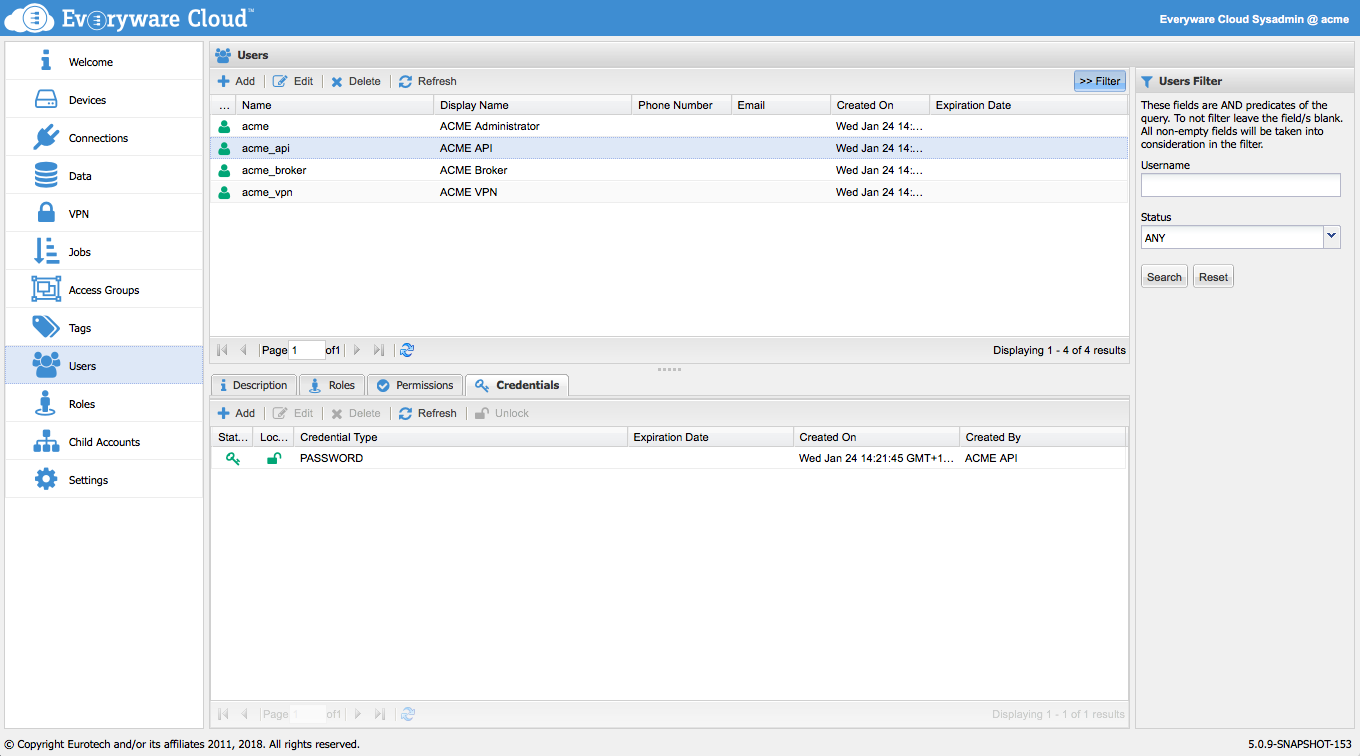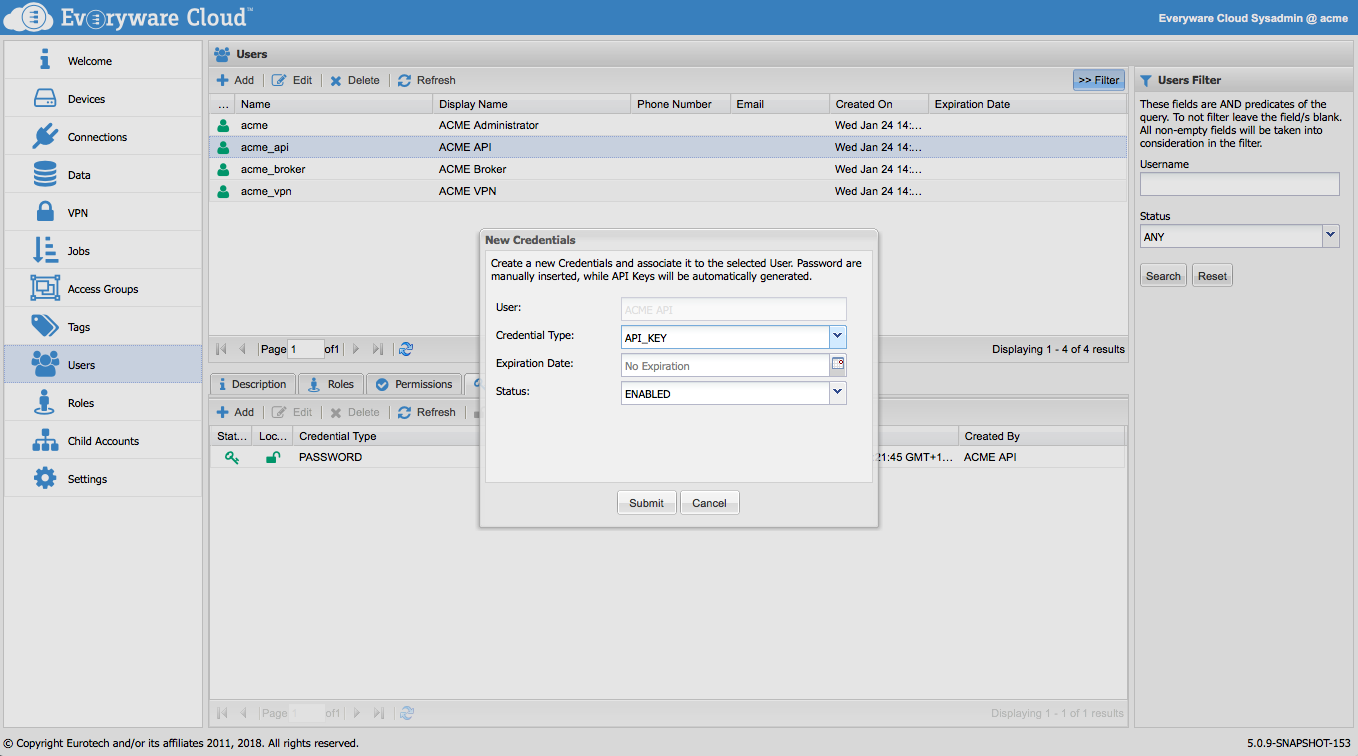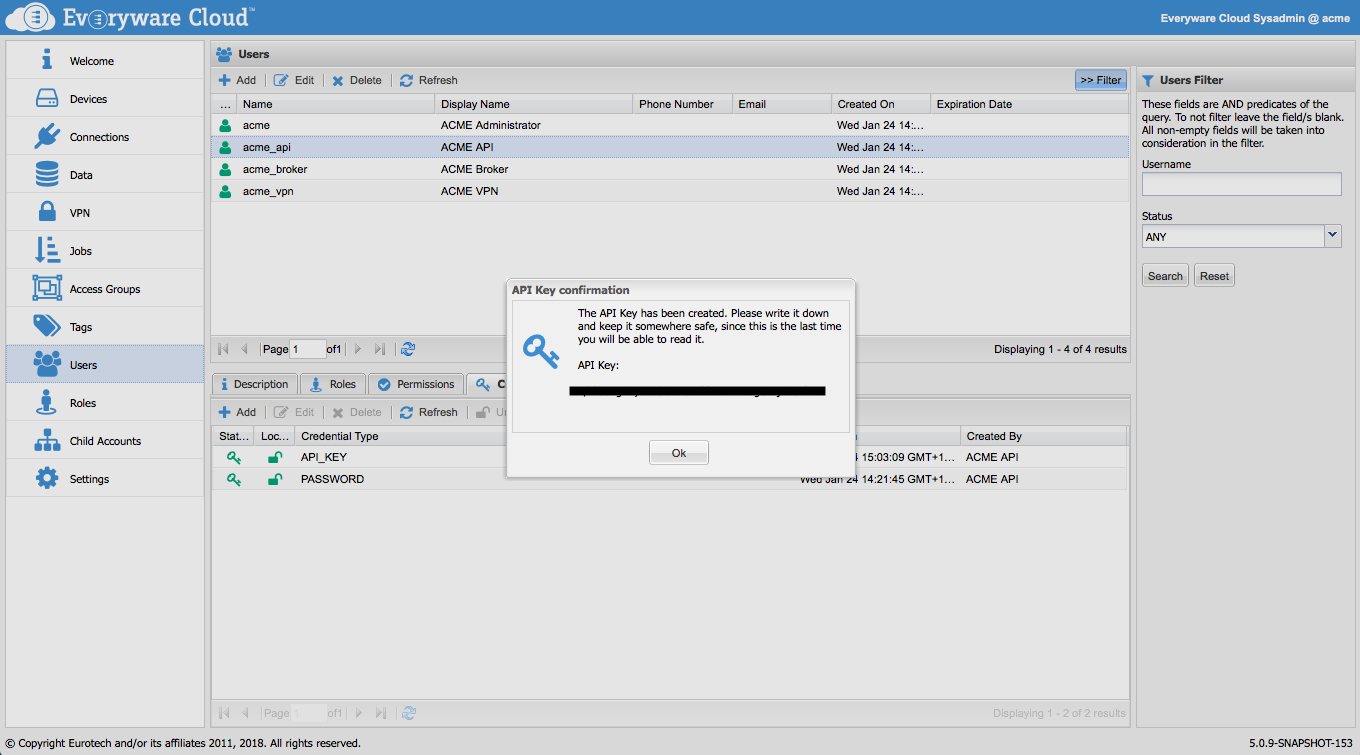Users and Credentials
Everyware Cloud accounts contain users. Users have one identity and one or more credentials. Users can be assigned one or more roles and can be granted one or more permissions.
When logged into Everyware Cloud console, navigate to the Users section to review and manage all the users created under the current account in scope.
Recommended Users for a New Account
Creating Users in a new Account
When logged in as an Everyware Cloud Administrator, create a new top level account. Then switch the account in context to the newly created account and navigate to the Users section. From that section, you can then create new Users, set their Credentials and grant their access control policy.
User Service Settings
Make sure to review and edit the settings of the User Service to enable the creation of users under the current account.
When creating a new account, it is recommended to create the following initial set of users. While more users can be added during the lifecycle of the account, the following is considered a good starting set.
For illustration purposes, the table below assumes "acme" as the account name. Replace "acme" with the name of the account just created.
| User | Description | Credentials Type | Granted Role/Permissions |
|---|---|---|---|
| acme | Administrator for the Acme account. | PASSWORD | Role: admin |
| acme_api | User for REST API connectivity | API_KEY | Permissions: broker:connect:ALL |
| acme_broker | User for device connectivity | PASSWORD | Role: thing |
| acme_vpn | User for VPN connectivity | PASSWORD | Permissions: vpn:connect:ALL |
Create a new User
Account administrators can create new users for the Everyware Cloud Console. To create a new user, click the New button in the Users section to open the New User dialog as shown in the following screen capture.

The following table defines the User Information for new users.
| Parameter | Description |
|---|---|
| Username | Must be at least 3 characters and can contain alphanumeric characters combined with dash and/or underscore. |
| Password | Must be 12 characters and contain at least one lower case letter, one upper case letter, one digit, and one special character. The password provided will be used to create the new user's credentials of PASSWORD type. |
| Display Name | A “user-recognizable” name assigned to the user, for display purposes only |
| User’s email | |
| Phone Number | User’s phone number |
Enter the User Information and use the tooltips provided in the Console for assistance.
Two additional parameters control the status of the user, which can be enabled or disabled, and provide an optional user's expiration date.
When completed, click Submit to create the new user.
User Credentials
A user can have one or more credentials. Credentials can be of two types: password and API key.
| Credentials Type | Credentials Description |
|---|---|
| PASSWORD | Password credentials can be used to authenticate to the Everyware Cloud platform through a username/password credentials pair. Such authentication mechanism can be used for the Everyware Cloud Console, and the messaging broker. When creating a new user, the password provided in the New User dialog is leveraged to create new Credentials of type PASSWORD. |
| API_KEY | API Key credentials can be used to authenticate to the Everyware Cloud platform REST API. |
In the Users section, select a user and access the Credentials tab to review and manage the credentials associated with the user.

Click the Add button to add new credentials to the currently selected user. Select the Credentials type and use the two additional parameters to control the status of the credentials, which can be enabled or disabled, and provide an optional credentials's expiration date.

When creating credentials of type PASSWORD, provide the password and confirm it.
When creating credentials of type API_KEY, provide the password and confirm it. After the API_KEY are created, a confirmation dialog will show the resulting API Key. Write it down and keep it somewhere safe, since this will not be provided in clear any more..

To edit user's credentials, select the credentials in the table and click on the Edit.
To delete user's credentials, select the credentials in the table and click on the Delete.
# User Roles and Permissions
A user can be assigned one or more roles and can be granted one or more permissions.
More information on managing roles and permission is available in the Access Control section.
Edit an User
To make changes to an existing user, select the user from the Users and then click Edit.
Delete an User
To make changes to an existing user, select the user from the Users and then click Delete.
Updated over 6 years ago
